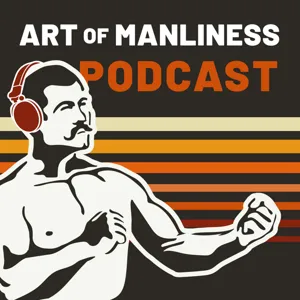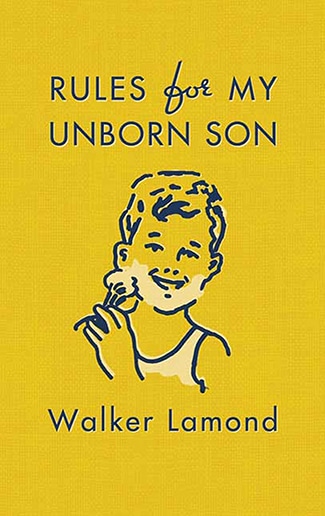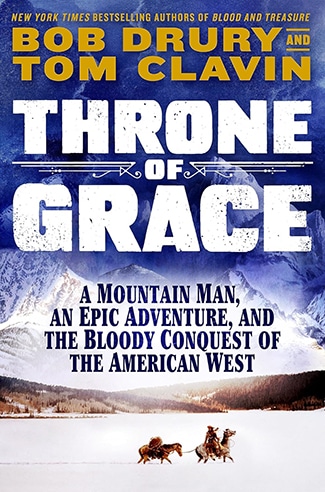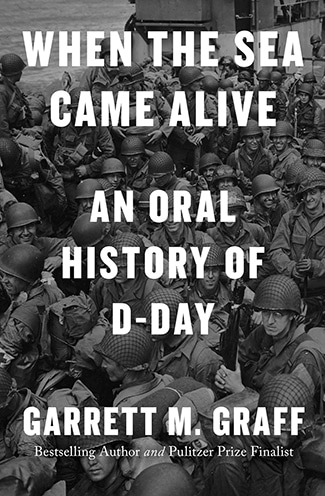Podcast Summary
Understanding American Masculinity through Heavyweight Boxers: Heavyweight boxers, like John L. Sullivan, Jack Johnson, Muhammad Ali, and Mike Tyson, symbolized various cultural conflicts in America and offer insights into the evolution of American masculinity.
The cultural history of heavyweight boxers in America reveals insights into the evolution of American masculinity and societal struggles. John L. Sullivan, the first American heavyweight boxing champion, set the archetype for this iconic figure and gained widespread recognition during a time when boxing was still illegal but receiving mainstream media coverage. Through exploring the lives of heavyweight greats like Jack Johnson, Muhammad Ali, and Mike Tyson, we can understand how these boxers symbolized various cultural conflicts in America. Boxing's decline in popularity doesn't diminish the importance of studying these figures and the lessons they offer about manhood and American culture. Listen to Paul Besten's conversation with Brett McKay on The Art of Manliness podcast to delve deeper into this topic.
The Rise of the First Sports Star: John L. Sullivan: John L. Sullivan, born in 1858, was the first sports star, transcending the fighting fraternity to become a hero to Irish Americans and a cultural icon, leaving a controversial legacy as a champion with unmatched fighting skills.
John L. Sullivan was a pioneering figure in American celebrity culture as the first sports star, transcending the fighting fraternity to become a hero to Irish Americans and a figure in literature, art, and songs. Born in Boston in 1858 during the post-Civil War era, he marked the rise of modern commercial sports and mass immigration, making the heavyweight championship a prominent thing. Sullivan's forceful personality and fighting skills made him a controversial figure, with as many haters as lovers. He decided to be a big deal when he became champion and made it so through his own career, developing a notion of himself as special and worthy of attention. As a fighter, Sullivan was unmatched in his time, leaving us to imagine how great he would have been with today's advanced athletics.
Bare knuckle boxing: Aggressive and unpredictable: In the early days of boxing, bare knuckle fights were unpredictable with shorter rest periods and no judges or scorecards. John L. Sullivan became the heavyweight champion by defeating the recognized champion in a grueling match.
The early days of boxing, specifically during the era of bare knuckle fighting, were vastly different from modern boxing. John L. Sullivan, a prominent fighter during this time, excelled in both styles and brought an unprecedented level of aggression and intensity to the ring. Bare knuckle fights had shorter rest periods between rounds and no judges or scorecards, making them unpredictable and potentially lengthy. Sullivan became the heavyweight champion by defeating the recognized champion at the time, Patty Ryan, in a fight that ended when one man could no longer continue. This system of determining the champion by consensus through defeating the current champion remains a traditional aspect of boxing. Today, the heavyweight championship is determined through various sanctioning bodies and title belts, leading to a more complex and controversial process.
The Complex History of Boxing's Heavyweight Title: Despite a long history of controversy and multiple organizations, Muhammad Ali's prominence made it difficult for the public to accept multiple heavyweight champions.
The history of boxing's heavyweight title has been marked by a complex and confusing lineage, with multiple organizations naming their own champions and creating unsatisfying arrangements for fans. This issue didn't fully impact the heavyweight division until the 1960s and 1970s, but even then, it was hard for the public to accept multiple champions due to the prominence of heavyweight boxing icons like Muhammad Ali. The early days of boxing were heavily influenced by the working-class, immigrant culture, which included a lot of drinking. Sullivan, one of the early heavyweight champions, was a heavy drinker and had a controversial public reputation, but he could be motivated to get into fighting shape when challenged. Sullivan's only documented loss was to James J. Corbett in 1892, but he continued to fight exhibitions for many years after losing the title. A notable moment in Sullivan's later career was his miraculous comeback fight in 1905 against a young professional fighter.
John L. Sullivan's Complex Relationship with American Identity and Race in Boxing: Despite his national pride, Sullivan drew the racial color line in boxing, refusing to face black challengers and casting a shadow over his legacy. Boxing's integration was slow due to racial tensions and fear of a black champion, but it offered more opportunities for blacks than other sports due to its illegality.
John L. Sullivan, the first heavyweight boxing champion of the modern era, had a complex relationship with American identity and race. He was proud to be an American and saw the title as a symbol of national pride. However, he drew the racial color line in heavyweight boxing and refused to give black challengers a shot, casting a shadow over his career. Sullivan's life was marked by riotous living, but he underwent a remarkable turnaround in old age, becoming a temperance lecturer and finding peace and redemption. Boxing led the way in racial integration in sports, but integrated fights were rare due to the racial environment and the fear of a black champion. The first black champions emerged in the lower weights in the late 1800s and early 1900s, but the underlying fear was that a black win would cause tensions and trouble. Despite the challenges, boxing provided more opportunities for blacks than other sports due to its illegality.
The First Black Heavyweight Champion: Jack Johnson: Jack Johnson broke the color line in boxing by becoming the first black heavyweight champion in 1908, despite facing social opposition. His victory marked a significant moment in sports history, but his career also highlighted the racial tensions of the time, culminating in a controversial fight against James J. Jeffries in 1910.
The color line drawn by John L. Sullivan in boxing, keeping blacks out of the heavyweight title contention, remained a powerful barrier until the arrival of Jack Johnson in 1908. Johnson managed to secure a title shot through a promoter who paid the white champion, Tommy Burns, to fight him. Despite social opposition, Johnson won the heavyweight championship, becoming the first black man to do so. Interestingly, Johnson followed Sullivan in embodying the larger-than-life persona of a heavyweight champion. Despite breaking the color line, Johnson's career served as a reflection of the country's racial tensions, culminating in the infamous fight against James J. Jeffries in 1910, which led to widespread race riots. Sullivan, who initially denied Johnson a title shot, ended up on a train with him after the fight and was the first man to shake his hand in victory. The heavyweight championship, symbolizing national power and manhood, held immense significance during this era, often carrying more weight than just an athletic contest.
Jack Johnson's Controversial Reign as Heavyweight Boxing Champion: Jack Johnson, the first African American heavyweight boxing champion, faced opposition from both white and black communities due to his unpopularity, scandalous personal behavior, and refusal to fight other black boxers.
Jack Johnson, the first African American heavyweight boxing champion, was a complex and controversial figure who faced opposition not only from white America but also from some sectors of the African American community. This was due in part to his unpopularity and the fear that he might make things harder for blacks, as well as his scandalous personal behavior, which included a fondness for nightlife, fast cars, and numerous prostitutes. Additionally, Johnson refused to fight other black boxers once he became champion, which was seen as economically unappealing due to the rampant racism in the country at the time. Despite these controversies, Johnson's career extended beyond the ring, with many writers being drawn to the sport and the figures of the ring, including Jack London, who coined the term "Great White Hope." The entwined nature of boxing and American culture during this period is evident in the widespread fascination with the sport and its figures.
Custom-fit clothing and car repairs bring convenience: Proper Cloth offers custom-fit dress shirts online, while YourMechanic brings car repairs to your doorstep, enhancing convenience and satisfaction for consumers
Custom-fit clothing and on-demand car repairs can bring convenience and satisfaction to everyday life. With Proper Cloth, you can get a perfectly fitted dress shirt without the hassle of measuring yourself or dealing with ill-fitting off-the-rack options. Their simple online process and wide selection of styles ensure a great fit, starting at an affordable $80. Similarly, YourMechanic brings the convenience of car repairs right to your doorstep, with upfront pricing, background-checked mechanics, and a 12,000-mile, 12-month warranty. Both Proper Cloth and YourMechanic embody the future of shopping and services, making life easier and more efficient for consumers. When it comes to captivating American culture, Jack Dempsey, a boxer from the early 1900s, stood out as a figure straight out of a Jack London novel. Dempsey brought a new style to boxing, with his speed, aggressiveness, and string of early knockouts, symbolizing the era of technological advancements and excitement, much like Mike Tyson did in the 1980s. His impact on American culture was significant, leaving a lasting impression on the sport and its fans.
Jack Dempsey's fame in boxing opened doors to entertainment: Boxing champions like Jack Dempsey used their titles to explore ventures in Vaudeville, Hollywood, and other industries, amassing wealth and long-lasting careers.
Jack Dempsey, an aggressive and charismatic boxing champion from the 1920s, not only revolutionized the sport with his fighting style but also leveraged his fame outside the ring to build a successful career in entertainment. From Vaudeville stages to Hollywood films, Dempsey's title as champion served as his calling card to explore various ventures and amass significant wealth. This trend of using sports titles as a springboard to other industries began with earlier champions like John L. Sullivan, who found success in Vaudeville and even acting. Interestingly, some athletes, like James Corbett, were not only boxers but also legitimate actors, leading to long-lasting careers in the performing arts.
Boxing as a Form of Showmanship: During the Great Depression, boxing thrived as an affordable form of entertainment due to its theatrical nature and the enduring appeal of the sport as a form of showmanship.
The connection between showmanship and boxing has been significant throughout the history of the sport. Boxers, like Max Baer and Muhammad Ali, have often seen the heavyweight title as a way to enter the world of entertainment, given the theatrical nature of boxing. The limited space, focused attention, and dramatic build-up of a boxing match make it akin to a theatrical performance. During the Great Depression, boxing thrived as an affordable form of entertainment for the public, with ticket prices being reduced to attract audiences seeking a distraction from economic hardships. Despite the economic downturn, boxing continued to be a source of excitement and entertainment for people, highlighting the enduring appeal of the sport as a form of showmanship.
A Golden Era of Boxing: Ethnic Diversity and Depression Drama: The 1930s and 1940s saw ethnic diversity in boxing, with Irish, Italians, and Black fighters rising to fame. Boxing and baseball were top sports, and the depression added drama. Champions like Dempsey, Sullivan, and Johnson were idolized, while Braddock, Lewis, and Walcott embodied dignity and hardship.
The 1930s and 1940s were a golden era for boxing in the United States. Ethnic diversity was prominent, with Irish, Italians, and Black fighters making their mark. Boxing and baseball were the top sports, and the depression added to the drama of the sport with stories like that of Cinderella man, James J. Braddock. Champions like Dempsey, Sullivan, and Johnson were elevated to godlike status, but in the 30s, they were more approachable. Boxers like Braddock, Joel Lewis, and Jersey Joe Walcott embodied a sense of dignity and hardship, paying back welfare agencies after their success. Joe Lewis, the brown bomber, became a symbol of American democracy during World War II for both African Americans and whites, making his talent and journey off the charts.
Joe Louis's career marked by racial barriers and groundbreaking moments: Joe Louis, the second black man to become heavyweight boxing champion, overcame racial barriers and unified people through significant rivalries, including one with Max Schmeling, ultimately becoming a symbol of American resilience.
Joe Louis's career as a heavyweight boxing champion was marked by both racial barriers and groundbreaking moments. Despite the rules imposed on him due to his race, Louis's personality fit the guidelines and he rose to become the champion, the second black man to win the title. His career was defined by significant rivalries, including one with Max Schmeling, who was adopted by the Nazi regime as a symbol of Aryan supremacy. The highly anticipated match between the two became a symbol of racial tensions and national pride, with Louis ultimately emerging as a hero and a symbol of American resilience. Throughout his long championship reign, Louis faced numerous challenges, but his ability to unite people and overcome adversity solidified his place as a legendary figure in sports history.
Muhammad Ali: The Charming Outsider who Revolutionized Boxing and American Culture: Muhammad Ali, an outsider in the reserved world of sports, revolutionized boxing and American culture with his charisma, brash behavior, and challenge to societal norms during the 1960s.
Muhammad Ali, a larger-than-life boxing champion, not only revolutionized the sport but also significantly impacted American culture during the 1960s. Ali's charismatic personality and brash behavior contrasted sharply with the reserved demeanor of athletes before him. When he first emerged, he seemed like an outsider, much like Elvis Presley did in music. Ali's arrival coincided with the Beatles' arrival in America, marking the beginning of the youth culture movement in the 1960s. His impact on boxing was significant as he changed the way athletes presented themselves, but his influence extended beyond sports, shaping the way celebrities were perceived in America. His career serves as a testament to the power of personality and the ability to challenge societal norms.
Muhammad Ali: Politics and Boxing in the Late 60s and 70s: Muhammad Ali's political stances and boxing career made him a trailblazing figure, but some argue the intersection of politics and sports has not had positive outcomes and self-celebration in sports today can be wearisome.
Muhammad Ali was a trailblazing figure in sports and politics during the late 1960s and 1970s, known for his stoic demeanor in the ring and his controversial political stances outside of it. His conversion to the Nation of Islam and his refusal to be inducted into the armed forces during the Vietnam War made him a divisive figure at the time, but his legacy has since been celebrated for bringing politics, often with racial undertones, into sports and for his showmanship and ego celebration. However, the speaker expresses a minority view that the political aspect of sports has not worked out positively and finds the self-celebration in sports today to be wearisome. In terms of boxing, Larry Holmes is considered the last great heavyweight champion in the purest sense, but Mike Tyson is seen as the last figure to have a universal impact and recognition beyond the culture.
Mike Tyson's Fascination with Boxing History: Mike Tyson's love for boxing history fueled his drive to become a champion, making him a complex and captivating figure in the sport.
Mike Tyson's dedication to the history of boxing set him apart from other fighters. Despite his challenging upbringing and personal struggles, Tyson's fascination with the sport's past added depth to his persona and fueled his drive to become a champion. He studied old films and read about legendary boxers, often mimicking their poses and techniques in the ring. This reverence for the sport's history, combined with his formidable talent and controversial personal life, made Tyson a complex and captivating figure in the world of boxing. His story serves as a reminder that a deep appreciation for the past can add intrigue and allure to modern-day achievements.
Boxing's decline in American culture: Factors like the rise of other sports, corruption, lack of leadership, and economic changes led to boxing's decline in American culture, making it less accessible to casual fans and moving it to cable and pay-per-view
Boxing's decline in American culture can be attributed to several factors, including the rise of other sports, corruption and lack of leadership within the sport, and economic changes. Boxing once held a prominent place in American culture but faced increasing competition from sports like football and basketball. Additionally, the corruption and chaos within the sport, including mafia influence and numerous governing bodies, led to a lack of clarity over who the champion was. These issues, combined with the economic realities of being a fighter, led to a decrease in the number of young men willing to pursue a career in boxing. Ultimately, these factors contributed to the sport losing fans and moving from regular television to cable and pay-per-view, which benefited the fighters but made it less accessible to casual fans.
Factors contributing to boxing's decline in the US: Boxing's shift to a premium pay model, lack of American heavyweight contenders, and emergence of European fighters are contributing to its decline, but its solitary and confrontational nature endures and may lead to a resurgence.
Boxing's decline in the United States can be attributed to various factors, including its shift to a premium pay model, the absence of American heavyweight contenders, and the emergence of European fighters. However, the solitary and confrontational nature of the sport may have played a role in its enduring appeal for many, particularly for young boys who were drawn to the starkness of the fighter's experience and the test of fortitude it represented. Despite its challenges, boxing continues to captivate audiences and may come back stronger with new talents and changing times.
Understanding the Mindset of Fighters: Fighters have a clear sense of identity and purpose, which helps them overcome personal challenges and excel in dangerous situations.
This is a crucial trait for fighters, as they often encounter dangerous situations. Despite the challenges they face in their personal lives, they have a clear sense of identity and purpose. To learn more about Beston's book and the lives of the fighters he profiles, visit his website at paulbeston.com. The Art of Manliness Podcast, hosted by Brett McKay, provides valuable tips and advice for living a manly life. Listeners are encouraged to leave a review on iTunes or Stitcher, share the show with others, and visit ArtofManliness.com for additional resources.













